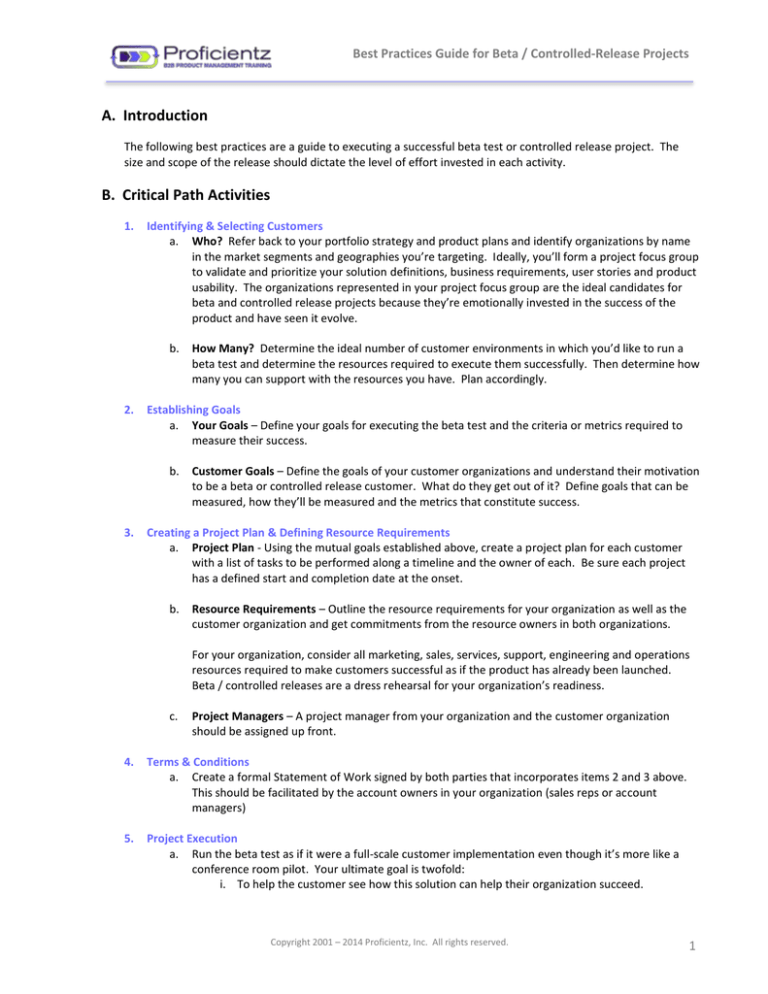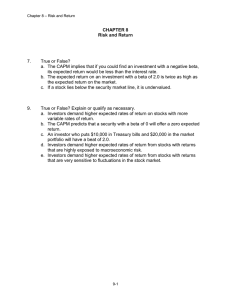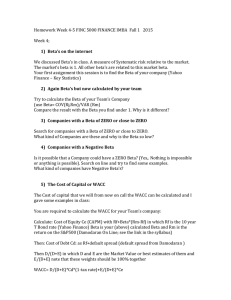
Best Practices Guide for Beta / Controlled-Release Projects
A. Introduction
The following best practices are a guide to executing a successful beta test or controlled release project. The
size and scope of the release should dictate the level of effort invested in each activity.
B. Critical Path Activities
1.
Identifying & Selecting Customers
a. Who? Refer back to your portfolio strategy and product plans and identify organizations by name
in the market segments and geographies you’re targeting. Ideally, you’ll form a project focus group
to validate and prioritize your solution definitions, business requirements, user stories and product
usability. The organizations represented in your project focus group are the ideal candidates for
beta and controlled release projects because they’re emotionally invested in the success of the
product and have seen it evolve.
b.
2.
Establishing Goals
a. Your Goals – Define your goals for executing the beta test and the criteria or metrics required to
measure their success.
b.
3.
How Many? Determine the ideal number of customer environments in which you’d like to run a
beta test and determine the resources required to execute them successfully. Then determine how
many you can support with the resources you have. Plan accordingly.
Customer Goals – Define the goals of your customer organizations and understand their motivation
to be a beta or controlled release customer. What do they get out of it? Define goals that can be
measured, how they’ll be measured and the metrics that constitute success.
Creating a Project Plan & Defining Resource Requirements
a. Project Plan - Using the mutual goals established above, create a project plan for each customer
with a list of tasks to be performed along a timeline and the owner of each. Be sure each project
has a defined start and completion date at the onset.
b.
Resource Requirements – Outline the resource requirements for your organization as well as the
customer organization and get commitments from the resource owners in both organizations.
For your organization, consider all marketing, sales, services, support, engineering and operations
resources required to make customers successful as if the product has already been launched.
Beta / controlled releases are a dress rehearsal for your organization’s readiness.
c.
Project Managers – A project manager from your organization and the customer organization
should be assigned up front.
4.
Terms & Conditions
a. Create a formal Statement of Work signed by both parties that incorporates items 2 and 3 above.
This should be facilitated by the account owners in your organization (sales reps or account
managers)
5.
Project Execution
a. Run the beta test as if it were a full-scale customer implementation even though it’s more like a
conference room pilot. Your ultimate goal is twofold:
i. To help the customer see how this solution can help their organization succeed.
Copyright 2001 – 2014 Proficientz, Inc. All rights reserved.
1
Best Practices Guide for Beta / Controlled-Release Projects
ii. To provide your marketing and sales team with strong customer testimonials at the time
of the marketing announcement.
C. Post Project Review
Assuming the beta test / controlled release projects are a verification of requirements and designs
previous validated by target customers, determine the extent to which your organization is prepared to
release it to the market at large.
Prepare a list of “must do’s” at the completion of the beta test that will ensure your company is fully
prepared to market, sell, service and support the product in a manner that’s highly conducive to
measurable customer success. Assign owners to the items on the list and execute your launch.
Copyright 2001 – 2014 Proficientz, Inc. All rights reserved.
2







